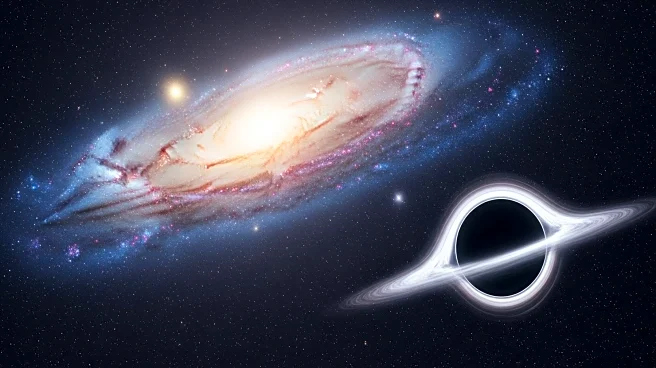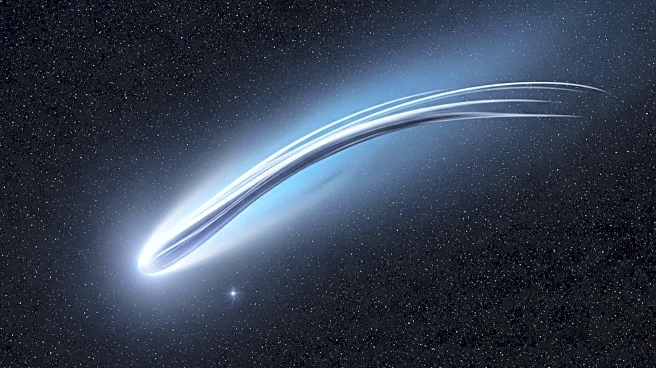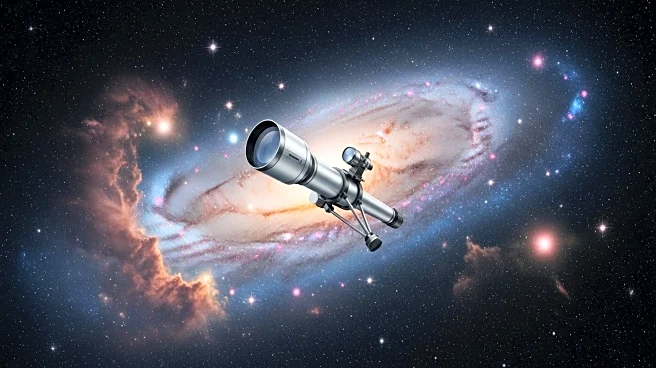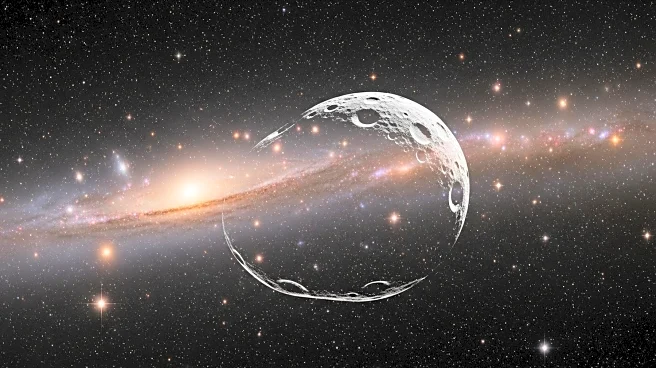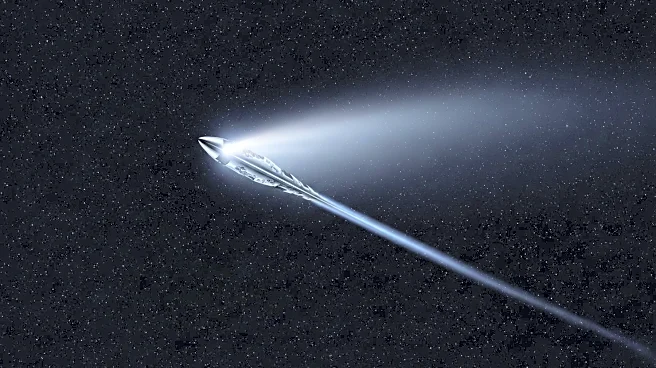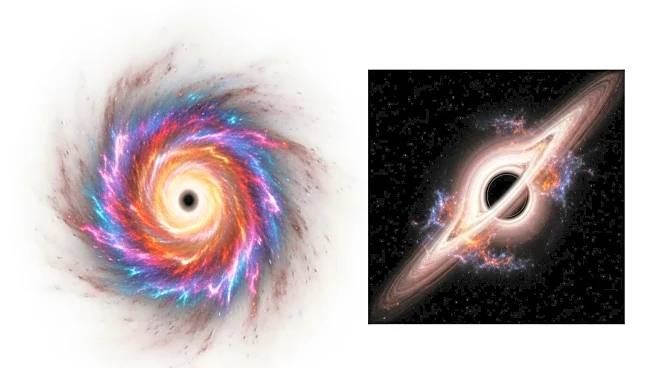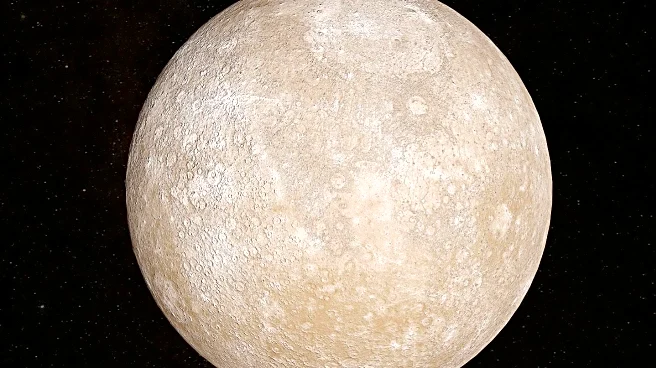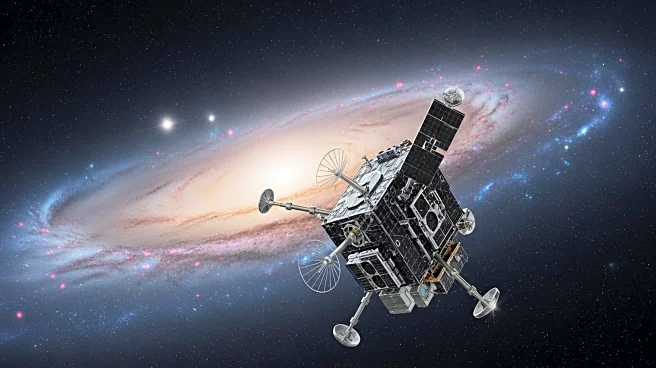What's Happening?
NASA's Solar Dynamics Observatory has discovered a new comet, C/2025 R2 (SWAN), which is expected to be visible to the naked eye in mid-October. The comet, discovered by Ukrainian amateur astronomer Vladimir Bezugly, will be closest to Earth on October 21, at a distance of 0.27 astronomical units. This coincides with the peak of the Orionid meteor shower, offering a unique opportunity for skywatchers to observe two bright comets and meteors simultaneously. Comet SWAN R2's tail is notably long, comparable to five full moons, and it orbits the sun every 22,554 years.
Why It's Important?
The discovery of Comet SWAN R2 is significant for astronomers and skywatchers, as it presents a rare opportunity to observe a celestial event involving two bright comets and a meteor shower. This event could enhance public interest in astronomy and provide valuable data for scientists studying cometary behavior and solar system dynamics. The visibility of the comet in the Northern Hemisphere, despite its proximity to the sun, underscores advancements in astronomical observation techniques.
What's Next?
Skywatchers are advised to prepare for optimal viewing conditions between October 20-23, with the new moon on October 21 ensuring dark skies. Observers should use binoculars or telescopes for the best view, and anticipate potential meteor activity from comet debris. The event may also prompt further scientific studies on comet composition and trajectory.

